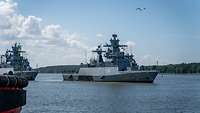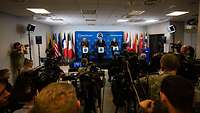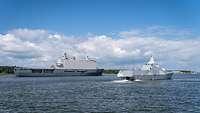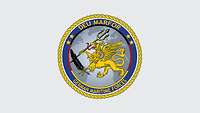Start of Baltic Operations 2024
Start of Baltic Operations 2024
- Date:
- Place:
- at sea
- Reading time:
- 4 MIN
The BALTOPSBaltic Operations 2024 exercise in the Baltic Sea began on June 7th with the departure of most of the exercise formation’s vessels from the Lithuanian port of Klaipėda. The United States European Command and the United States Naval Forces Europe and Africa invite primarily NATONorth Atlantic Treaty Organization partners to the USUnited States-led major maritime exercise. In this 53rd iteration of BALTOPSBaltic Operations the German Navy takes a leading role.
This year the exercise will take place from June 7th to 20th in the central Baltic Sea between Sweden, Latvia, Lithuania and Poland, but also partly in the western Baltic Sea off the coast of Germany. 20 nations are involved, primarily with naval forces, including Denmark, Norway, Finland, Sweden, Estonia, Latvia, Lithuania, Poland, the Netherlands, Belgium, France, Spain, Germany, the United Kingdom and the USA. Of the approximately 9,000 personnel involved, around half are naval infantry.
The entire exercise formation made up of two large task forces with a total of more than 50 naval vessels. The majority of these are grouped into Task Force 369. This large surface battle group with six subordinate task groups will be led for the first time by personnel from the German Maritime Forces (DEU MARFORGerman Maritime Forces) command staff of the German Navy. Task Force 162, on the other hand, includes the amphibious ships and is under USUnited States command.
At the hot spot of sea connections in the Baltic Sea
“I am proud that Germany has been given an important command position by the United States as part of BALTOPSBaltic Operations,” says Rear Admiral Stephan Haisch. He is the commander of DEU MARFORGerman Maritime Forces and at the same time of Task Force 369 during BALTOPSBaltic Operations 2024. “Together with my multinational staff in Rostock, I will – in my role as Commander Task Force – coordinate and lead more than 30 of the vessels participating in the exercise. As the German Navy, we therefore bear responsibility for the hot spot of sea routes in the Baltic Sea and the critical maritime infrastructure of all states bordering the Baltic Sea.”
For all NATONorth Atlantic Treaty Organization partners of the region, free sea routes are critical, sometimes to their very survival. Finland and the three Baltic states are almost entirely dependent on these maritime routes – especially in the event of a crisis. The German Navy is the largest naval force of all those bordering the Baltic Sea and therefore bears special responsibility.
The planning and implementation of BALTOPSBaltic Operations is the responsibility of the NATONorth Atlantic Treaty Organization naval command staff STRIKFORNATONaval Striking and Support Forces NATO. This headquarters has the role of exercise control, a management and referee function, so to speak. DEU MARFORGerman Maritime Forces as the staff of Commander Task Force 369, i.e. Rear Admiral Haisch, is part of the training audience itself.
A clear message of deterrence
The official aim of the major Baltic Sea exercise is to strengthen the integration of the allied nations in joint military operations – against the background of NATONorth Atlantic Treaty Organization’s strategic planning for deterrence and defence in the Europe-Atlantic region.
“This year we will exercise new capabilities, and celebrate Sweden’s place as the 32nd nation to join NATONorth Atlantic Treaty Organization,” said USUnited States Vice Admiral Thomas Ishee, the commander of STRIKFORNATONaval Striking and Support Forces NATO. “We provide a clear deterrence message and deliver peace and security for one billion people on both sides of the Atlantic.“
For participating naval units, BALTOPSBaltic Operations 2024 offers the opportunity to operate as part of a large force in a multi-dimensional environment. The exercise therefore provides for demanding training, particularly for air defence, surface combat, anti-submarine warfare, mine countermeasures and amphibious operations. BALTOPSBaltic Operations 2024 also provides a test bed for NATONorth Atlantic Treaty Organization's leadership structure and defence planning at the tactical and operational levels.
This year BALTOPSBaltic Operations once again has a special amphibious focus. During the exercise, up to 5,000 naval infantry from nine nations as well as six large landing ships or helicopter carriers and their crews are training. The German Navy is involved in this with the Coastal Operations Company of its Sea Battalion, again in close cooperation with the Royal Netherlands Navy, on board the dock landing ship HNLMSHis/Her Netherlands Majesty's Ship “Johan de Witt”.
In addition, German corvettes, mine-countermeasure vessels and supply ships as well as a submarine and a maritime patrol aircraft are taking part in BALTOPSBaltic Operations 2024. It is important to the German Navy that, in parallel with global projects such as its global Indo-Pacific Deployment 2024, it continues to make a comprehensive contribution to national and colleictive defence by protecting NATONorth Atlantic Treaty Organization’s northern and eastern flanks.







